1. ETIOLOGY
1.1. Women
1.1.1. lobular carcinoma
1.1.2. Pagets Disease
1.1.2.1. "crusting, red, scaly tissue on the nipple with itching, burning, or bleeding...(Peate, 2001).
1.2. Men
1.2.1. Infiltrating ductal carcinomas
1.2.2. Pagets Disease
1.2.3. Hereditary risk
1.2.3.1. BRBA 1 gene
1.2.3.2. Incidence: 14 black men in every million and 8 white men in every million (Peate, 2001)
1.2.4. Jewish
2. CAUSATIVE FACTORS
2.1. Reproductive
2.1.1. Postpartum
2.1.2. Use of contraceptives
2.1.3. Diethylstibestrol (rarely used since 1971)
2.2. hormonal
2.2.1. Men may have abnormal hormone activity
2.2.2. Men and history of Klinefelter syndrome
2.2.3. history of prostate cancer
2.2.4. (Peate, 2001)
2.3. environmental
2.3.1. Race, Socioeconomic status and aptitude of the English language add to breast cancer patient outcomes.
2.3.2. Radiation exposure
2.4. lifestyle
2.4.1. Patel, et al, 2018 discuss the following: "Studies have found that women with Medicare or Medicaid or without insurance are more likely to present with larger tumors, compared to privately insured women."
2.4.2. Alcohol use
3. RISK FACTORS
3.1. close relatives diagnosed with breast or ovarian cancer when they were younger than 45 years of age (Huether, 2019)
3.1.1. alterations in certain breast genes BRCA1 and BRCA2
3.2. history of radiation treatment to chest or breast
3.3. high breast density
3.4. Women diagnosed at a younger age have a stronger likelihood for breast cancer mortality (Patel, et al, 2018).
4. DIAGNOSTIC TESTS
4.1. x-ray mammography
4.1.1. Complications such as false-positive results, pain, and women less than 45 years of age are not appropriate due to their dense breast tissue (Ismail, et al, 2018).
4.2. ultrasound
4.2.1. Needs a skilled radiologist to notice abnormalities
4.3. DIET or digital image least-tomography
4.3.1. potentially could improve cancer mortality because it could be offered to any age patient (Ismail, et al, 2018).
4.4. MRI (Breast magnetic Resonance Imaging)
4.5. Digital breast tomosynthesis or 3D mammography (CASS, 2017)
4.6. Online Breast Cancer Surveillance Consortium Calculator (CASS, 2017)
5. COMMON FINDINGS
5.1. Most common cancer in American women
5.2. Younger women present with threatened circumstances. Women under 45 years of age are diagnosed with larger tumors and at more aggressive stages (Patel, et al, 2018).
5.3. Costs can range anywhere from $100 to $1, 000 out of pocket after mammogram results are positive (CASS, 2017).
6. TREATMENTS
6.1. chemotherapy
6.1.1. Chemotherapy-induced peripherally neuropathy is a common side effect. Often it is associated with docetaxel administrations (Pereira, et al, 2016).
6.2. probiotics
6.3. Masectomy or bilateral masectomy
6.3.1. Younger women more often chose this option. Sometimes bilateral mastectomies are done as a preventative treatment (Patel, et al, 2018).
6.3.2. Cancer in higher stages such as stage III most often chose this option.
6.4. lumpectomy
6.5. Radiotherapy
6.5.1. Cancer-related fatigue (Inflammatory response)
6.5.1.1. "The cytokine interleukin-6 (IL-6) is the principal mediator of this inflammatory process. Very limited cells express receptors for IL-6. However, when IL-6 dimerises with its agonistic soluble receptor (interleukin-6- soluble receptor (IL-6sR)), ubiquitous cell signalling from the periphery to the central nervous system is enabled; via a process called trans-signalling [22]. Trans-signalling provides a theoretical basis for central effects from localized irradiation" ( Courtier, 2013).
7. SUPPORT
7.1. Women with advanced stage breast cancers found online support model useful (Kemp, et al, 2018).
7.1.1. User friendly
7.1.2. personalized
7.1.3. common disease characteristics
7.1.4. topics of interest

